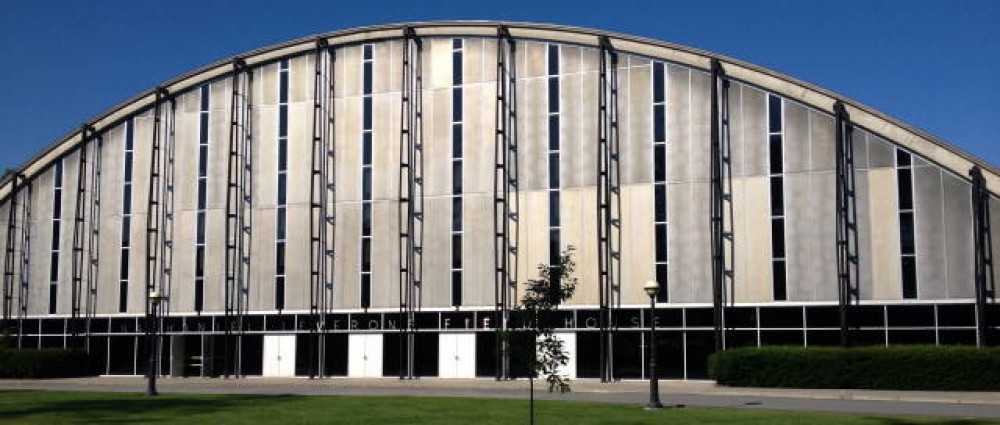Some may think that this athletic complex is separated from the rest of campus and the sense of place that Leverone provides is only an athletic identity, but I argue that this is not true, but rather part of an identity shared by all of campus, one that is uniquely Dartmouth.
There are many reasons for why I think this is true, one being the sheer number of athletes at Dartmouth. The Dartmouth Athletics website offers the fact that 75 percent of all Dartmouth students participate in athletics, stating “Dartmouth offers 35 varsity sports – 16 for men, 17 for women and two coeducational programs in sailing and equestrian. In addition, there are 33 club and 24 intramural sports as three-quarters of Dartmouth undergraduates participate in some form of athletics.” It is true that not all of these athletes are participating at a high level; US News cites the number participating in NCAA D1 sports for the Big Green as 25 percent, which is still an incredibly high percentage. Because of the sheer number of athletes that make up the Dartmouth student body, something that has an effect on a large number of athletes has the ability to be very important to campus culture. However, it is not just the teams using this space. In addition to varsity and club sports, many other groups that are important to Dartmouth’s identity are involved in something in Leverone.
One of these other groups is Dartmouth Army ROTC. Although it is quite a small program, only graduating a few officers each year, it is an important offering that Dartmouth provides for its students. These cadets spend fours years at Dartmouth training to be military officers while studying at a fine liberal arts institution, making this a program capable of producing truly great future leaders. These soldiers are also respected leaders at Darmouth that contribute to the campus culture.

Pictured above are men from Dartmouth’s ROTC program lapping the track in Leverone during an early morning physical training session.
Another program that uses Leverone is DOC freshman trips, something that directly affects almost every Dartmouth student. 93 percent of Dartmouth students go on first-year trips and every single person in that 93 percent spends their first night as a Dartmouth student in the Leverone field house. In fact, many of the students that don’t go on trips cannot do so because of an athletic engagement and it can be assumed that most of them will train in Leverone during some point of their Dartmouth carreer. This means that the field house has had some impact on almost every single Darmouth student, so what goes on there is not just important to a select group of athletes, but rather the entire school community.

Students on their first-year outdoor trip spend their first night in Leverone Field House.
Dartmouth athletics are also a point of pride and excitement for students, who are some of the biggest supporters of the sports teams. Football game attendance, although a slight outlier because of the sport’s general popularity, gives some insight into the amount of fans there are at Dartmouth. In 2010, the average home game attracted 5,971 fans and in 2012 attracted 6,402 fans. At a college with about 6200 students, it is impossible for all of these fans to be students, but almost all of them are involved in the college. Dartmouth, the school, and Dartmouth-Hitchcock Medical Center are two of the largest employers in the upper valley and the 4th and 1st largest employer in the state of New Hampshire, respectively. Because of the amount of people related to Dartmouth in the immediate area, it can be inferred that a lot of people who are not students, family, or alums are somehow involved in the college and the college’s campus culture.
Through all of these examples we can see that an identity shared by athletes at Dartmouth, does not only affect those athletes, but rather because part of the broader, more important identity that is held by all Dartmouth students.
